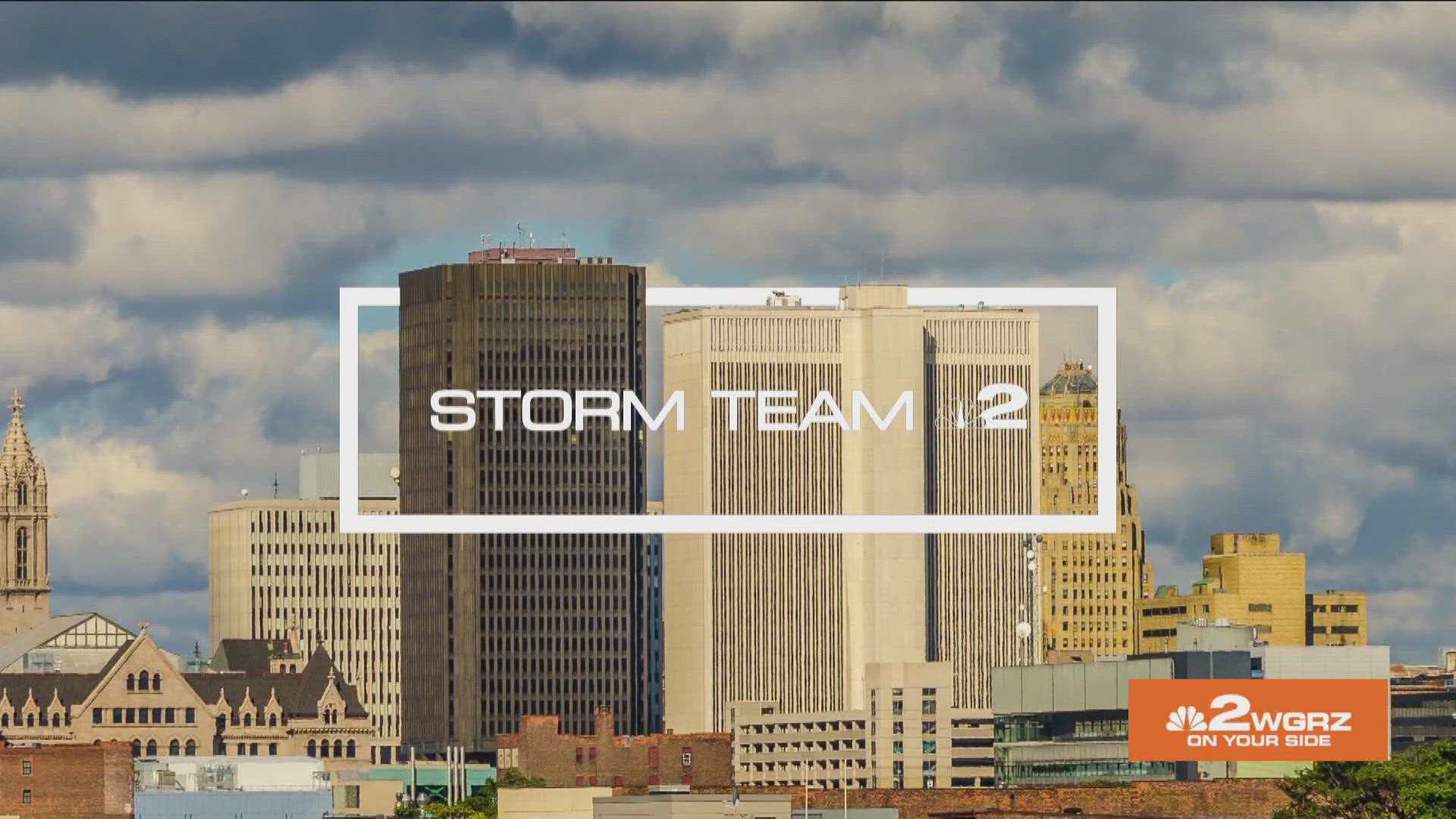BUFFALO, N.Y. — Nov. 20 was the date two historic snow events in WNY came to an end.
Nov. 20 saw the culmination of the 2014 'Snowvember,' which brought a crippling lake snow to Buffalo's southtowns. That same day in 2022 was the date nearly 7 feet of snow stopped falling.
The meteorological set-up was very similar in both years, with very similar resulting snowfall totals.
The main difference between the two events was that in 2022, the intense snowfall fell over a shorter duration of time and over a greater area.
In both years, the difference in total snowfall between the regions that saw the most versus the least was astonishing.
Between last Thursday and Sunday, the total of snow that fell in Erie County alone ranged from 1 foot in Amherst to nearly 7 feet in Hamburg. That is a 60 inch difference in about 20 miles.
What causes these extreme characteristics is these two snowfall events? The answer is Lake Erie.
The 216-mile long lake creates a perfect set-up for lake effect snows that slam areas downwind from the prevailing southwest winds that funnel down the spine of the lake.
Cold air traveling over a relatively warm lake collects moisture that falls as snow. The amount of snow that falls depends on two main components in the atmosphere. If the wind traveling over the lake is traveling in the same direction at all levels of the lower atmosphere, the band of snow that forms will be more intense and can remain fairly stationary. Also the greater the temperature difference between the lake and the air above it the more intense the snowfall.
Typically, a temperature difference between the lake and the air above need to be about 15 degrees for the lake effect process to begin.
Heavy snowfall requires a temperature contrast of 25 degrees. Last week, Lake Erie was at near record warmth and the temperature difference of the cold air and the lake was 40 degrees setting the stage for intense snowfall, in some cases up to 4-5 inches per hour.
On Thursday night, a lake effect snow band set up over the Buffalo Southtowns and remained in the same general location for 24 hours. With snowfall rates that ranged from 2-4 inches per hours simple math shows how 70-80 inches of snow is possible.
- Hamburg 81.2 inches
- Orchard Park 80 inches
- Blasdell 76 inches
- Elma 67 inches
To the North and south of that band totals were much lower
- Kenmore 13.9 inches
- East Amherst 13.3 inches
- Tonawanda 12.3 inches
The band of snow did eventually move up to the north to Niagara Falls on Saturday and then back south again on Sunday as it slowly faded away. That process caused the band to move through Buffalo twice bringing the airport a total of 36.6 inches making this the second snowiest November on record.

